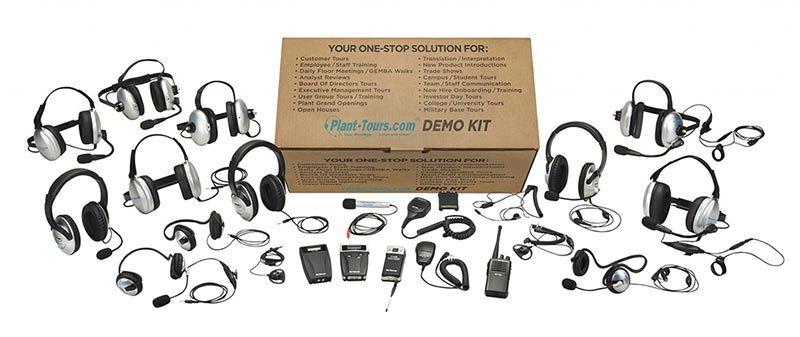I’ve spent over 40 years in the world of industrial communication—helping companies improve how their teams connect, coordinate, and get work done. Along the way, I’ve come to appreciate just how essential transceivers are. You’ll find them in nearly every communication system, from smartphones to the two-way radios used on factory floors.
Still, most people don’t know what a transceiver actually does—or why it matters. In this guide, we’ll break it down in clear terms. We’ll cover the basics, explain the different types, and share simple ways to spot and solve common issues. Whether you’re troubleshooting equipment or just curious about the tech behind the scenes, this is a good place to start.
Understanding the Basics
A transceiver is a combination of a transmitter and receiver in a single unit. This piece of technology that enables the bidirectional exchange of signals was introduced over a century ago (1901) when Guglielmo Marconi sent the first radio transmission across the Atlantic Ocean.
The first transceiver was a radio frequency transceiver that could only send and receive sound data. However, other types of transceivers, such as Ethernet, wireless, and fiber optic, can also process graphics and videos.
Are Transceivers and Transmitters the Same?
No, while transceivers and transmitters are commonly confused, they are not the same. Transmitters can only send out data, while transceivers can both send and receive data.
Types of Transceivers and Their Applications
Transceivers are the lifeblood of many communication systems as they’re used to both transmit and receive data. However, how they accomplish this task varies, depending on which type of transceiver they are.
There are four main types of transceivers: radio frequency, Ethernet, wireless, and fiber-optic.
Radio Frequency Transceivers
Also known as RF transceivers, these operate wirelessly over radio waves—converting intermediate frequencies (IF) into radio frequencies (RF). They don’t need wires or connections to function and can transmit audio or video. Typically, they use frequency bands, such as VHF (Very High Frequency) or UHF (Ultra High Frequency).
Radio transceivers can work in either half-duplex or full-duplex mode:
- Half-duplex – Cannot receive and transmit data simultaneously since it operates on a single frequency. Walkie-talkies are an excellent example, where only one person can talk at a time.
- Full-duplex – Transmission and reception take place on two different frequencies. Therefore, this transceiver can transmit and receive simultaneously. Two-way radios, where both parties can speak at the same time, are a good example of this.
Common Uses: Mobile phones, radio broadcasting, two-way tour guide systems, and wireless sensors.
Ethernet Transceivers
Ethernet transceivers allow devices like computers to connect to Ethernet networks. Commonly used in local area networks (LAN). They transmit data over cables, commonly coaxial cables, twisted pair cables, or fiber optic cables. Some can deliver power alongside data over the same cable—Power Over Ethernet (PoE).
Common uses: Computers and laptops, routers, printers, IP cameras.
Wireless Transceivers
Wireless transceivers allow devices to send and receive signals wirelessly. They transmit data using Wi-Fi, Bluetooth, etc. They can be thought of as a combination of radio frequency and Ethernet transceivers.
Common uses: Wi-Fi Routers, Bluetooth headphones, smart home devices like Google Home.
Fiber-optic Transceivers
Fiber-optic transceivers convert electrical signals to optical signals (and vice versa). They transmit data over optical fibers, essentially turning data into light. This allows information to move at light speed, making it ideal for high-speed data communication. It is compatible with various communication standards, such as SFP, SFP+, QSFP, etc.
Common uses: Phone networks, TV cable networks, data centers, fiber channel storage area networks (SANs).
Key Features and Specifications of Transceivers
As shown in the section above, transceivers can take on different forms. Each comes with unique features and specifications.
| Transceiver Type | Range | Data Rates | Strengths |
| Radio Frequency | Up to several miles | Varies heavily based on technology and application | Obstacle penetration |
| Ethernet | Up to 100 yards on copper (CAT5e/CAT6) | 10 Mbps, 100 Mbps, 1 Gbps, 10 Gbps, etc | Simplicity & cost-effectiveness |
| Wireless | Approx. 32 yards indoors & up to 328 yards outdoors. | Up to 10 Gbps | Mobility & flexibility |
| Fiber Optic | Up to 25 miles | From 100 Mbps to 400 Gbps+ | High-speed data transmission & immunity to electromagnetic interference |
Common Challenges and Solutions in Transceiver Use
Like any technology, transceivers occasionally require adjustments and maintenance to function at their best. The good news is that most common transceiver problems can be fixed using simple solutions.
Below are the most common issues that our communication experts have troubleshooted over the years.
Interference
Your transceiver isn’t working correctly due to interference from other electrical devices.
Solution: My advice, if using an RF receiver, is to try switching frequencies or use a spread-spectrum signal to minimize interference. Using a communication system that can be wired with fiber optics? A fiber-optic transceiver can eliminate electromagnetic interference altogether.
Power Consumption
Your transceiver runs out of power quickly.
Solution: If you’re experiencing this type of issue on new equipment, I suggest switching to low-power mode or similar in order to reduce power consumption. If you have noticed a drop in battery life only recently, it may be time for a new battery. See if your unit supports a long-life battery.
Integration
Due to design variability or other issues, you are having problems integrating new transceivers into your existing system.
Solution: I would first suggest that you contact the manufacturer of your original transceiver—they should have experts to guide you by email or phone. Additionally, they may provide development kits and reference designs.
Related Read: Do All Walkie-Talkies and Radios Work Together?
At Plant-Tours, we ensure that your RF transceiver integrates seamlessly into your communication system.
When Ocean Spray had an issue communicating with visitors during tours, they turned to us for a solution. We solved their problems—compromised audio clarity and accessibility—by fitting them with a new audio tour system. This included an MT-700 transceiver for robust coverage paired with MT-370 headphones, which are designed to work flawlessly together.
Conclusion
From my experience, no matter how advanced communication gets, the humble transceiver remains the backbone of industrial connectivity. Whether you’re sending audio over RF, data through Ethernet, or light through fiber optics, the goal is always the same: clear, instant communication.
From the first transatlantic wireless signal transmitted to modern fiber optic networks, transceivers have significantly evolved. However, all four main forms of transceivers remain a staple in our everyday communications. We rely on these devices to keep us connected in the workplace, online, and beyond.
If you have questions about RF transceivers to keep you connected in the workplace, don’t hesitate to contact one of our communication experts.
Sources
CLRN team. (2024). How does optical fiber transmit data? In California Learning Resource Network. https://www.clrn.org/how-does-optical-fiber-transmit-data
HISTORY com Editors. (2010). First radio transmission sent across the Atlantic Ocean. In December 12, 1901. https://www.history.com/this-day-in-history/December-12/marconi-sends-first-atlantic-wireless-transmission
Ocean Spray. (n.d.). In https://www.plant-tours.com/. Retrieved May 22, 2025, from https://www.plant-tours.com/case-studies/ocean-spray
Space Communications and Navigation Fun Facts – NASA. (n.d.). Retrieved May 22, 2025, from https://www.nasa.gov/directorates/space-operations/space-communications-and-navigation-scan-program/scan-outreach/fun-facts/#radio-waves-what
Understanding Spread-Spectrum RF Communication. (n.d.). In Electronics Textbook. Retrieved May 22, 2025, from https://www.allaboutcircuits.com/textbook/radio-frequency-analysis-design/selected-topics/understanding-spread-spectrum-rf-communication









